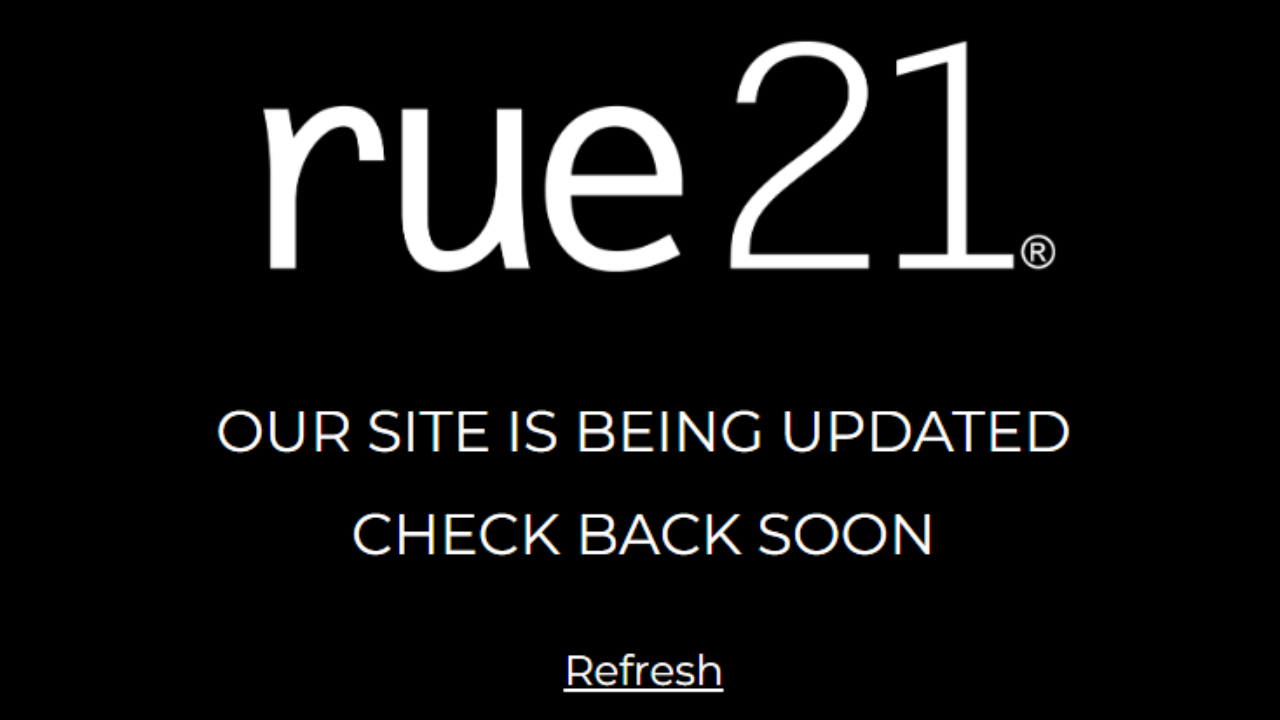
Embarking on effective SEO practices, we often find ourselves pondering over one particular question: how many SEO keywords should I use per page?
The art of keyword research lays the foundation for any successful SEO strategy, guiding us to create content that resonates with our audience and performs well in search results. It equips us with knowledge about what our target audience is actively seeking, enabling us to capture relevant website traffic.
As we delve into the significance of SEO keywords, we’ll bridge the gap between audience queries and our content. By employing keyword research tools and honing in on SEO keyword planning, our journey seeks to balance keyword quantity and quality, ensuring each page on our website contributes to a cohesive SEO strategy.
Let’s discover together how a nuanced approach to using SEO keywords can drive substantial improvements in our online visibility and engagement.
Determining the Ideal Number of Keywords
Determining the ideal number of SEO keywords per page can be likened to setting the right ingredients for a recipe. Too few may result in bland content that search engines overlook, while too many can overwhelm and dilute your message. Here’s a practical guide to help you find the perfect measure:
Focus on Specificity with Long-Tail Keywords:
Start with the most descriptive and specific keywords that align with your content strategy. Long-tail keywords, which are usually four words or more, can effectively target niche demographics and have a clearer user intent.
Primary and Secondary Keyword Targets:
For a well-rounded approach, aim to target 1-2 primary keywords that define the main focus of your content.
Alongside, incorporate a mix of 1-4 secondary keywords that support the primary ones, covering related subtopics and variations.
Content-Length and Keyword Allocation:
The length and type of your content play a significant role in determining the number of SEO keywords to include:
• Product Page (500 words): 1 Primary, 2-3 Secondary (e.g., “Eco-friendly shoes,” “Sustainable materials,” “Ethical production”)
• Service Page (600 words): 1 Primary, 3-4 Secondary (e.g., “Web design services,” “User experience,” “Mobile optimization”)
• DIY Tutorial (900 words): 1 Primary, 5-6 Secondary (e.g., “Home gardening hacks,” “Soil types,” “Seasonal plants”)
• Recipe Article (800 words): 1 Primary, 4-5 Secondary (e.g., “Gluten-free baking,” “Alternative flours,” “Oven temperatures”)
• Tech Review (1200 words): 1 Primary, 6-7 Secondary (e.g., “Latest iPhone review,” “Camera quality,” “Battery life”)
• Small Blog Post (1000 words): 1 Primary, 5-6 Secondary (e.g., “Vegan diet benefits,” “Reducing meat consumption,” “Vegan recipes”)
• Fitness Routine (1400 words): 1 Primary, 7-8 Secondary (e.g., “High-intensity interval training,” “Warm-up exercises,” “Timing intervals”)
• Travel Guide (1500 words): 1 Primary, 8-9 Secondary (e.g., “Bali travel guide,” “Local cuisine,” “Cultural sites”)
• Long-Form Blog Post (2000 words): 1 Primary, 10-12 Secondary (e.g., “Digital marketing trends,” “PPC advertising,” “Social media dynamics”)
Consider Content Purpose and User Intent:
Assess the purpose of your content, the competition within your niche, and the user intent behind the keywords. This holistic view ensures your keyword strategy is both targeted and effective, enhancing your page’s relevance and search engine visibility.
By following these guidelines, we can craft content that not only appeals to search engines but also provides value to our readers. Remember, the ultimate goal is to create a seamless and informative experience that satisfies both the algorithms and the human curiosity behind the search queries.
SEO keyword case study: well optimized niche website in Finland
In this case study, we analyze the SEO strategies employed by a popular casino niche website in Finland. The site www.zimpler-pikakasino.com has been successful in ranking well for its main keywords, which are “Zimpler pikakasino,” “Zimpler kasinot,” and “Zimpler casino.”
You can check the search results by typing those keywords on Google.
Initial Assessment
Upon reviewing the website, it was observed that the website utilizes 1-3 main SEO keywords per page. This focused approach to keyword targeting has proven to be effective in garnering favorable attention from Google.
Strategy Analysis
The website’s strategy of utilizing 1-3 main SEO keywords per page has contributed significantly to its success in ranking well for the targeted keywords. This targeted approach has likely resulted in increased relevance and authority for the chosen keywords, thereby positively impacting the website’s search engine rankings.
Content Optimization
The content on the website has played a crucial role in its SEO success. By incorporating the main keywords such as “Zimpler pikakasino,” “Zimpler kasinot,” and “Zimpler casino” organically and strategically within the content, the website has effectively communicated its relevance to both users and search engines.
Only natural backlinks
The website’s link building strategy has likely contributed to its SEO success. By acquiring high-quality backlinks from reputable sources within the casino niche, the website has enhanced its authority and trustworthiness in the eyes of search engines. All links looks natural and many high level websites like to link back to that website.
On-Page SEO
The website’s on-page SEO efforts, including meta tags, title optimization, and URL structure, have been aligned with best practices. This meticulous attention to on-page SEO factors has further reinforced the website’s relevance and visibility for its main keywords.
The Role of Primary and Secondary Keywords
Identifying the most relevant and high-potential keywords for a business is crucial for SEO success. As we prioritize keyword research as a key part of our SEO and overall marketing efforts, it’s important to understand the role of primary and secondary keywords. These keywords should be grouped together in our SEO strategy, rather than targeted separately, to avoid keyword cannibalization.
When it comes to the primary keyword, it’s the beacon that guides the search intent and should be prominently used in the title, URL, and H1 tag. For example, if our focus is on selling laptops online in Texas, our primary keyword could be “buy online laptops Texas.” This keyword pinpoints our main offering and the geographic specificity we aim to target.
Secondary keywords support our primary keyword and should be woven into the body of the content in a way that feels natural and relevant. They help us cover a broader range of related topics and queries that potential customers might use. For instance, alongside our primary keyword, we could use secondary keywords like “Lenovo laptop shop near me” or “buy Asus laptops.” These terms complement our main keyword and enhance the page’s visibility for a variety of related searches.
Here are some key points on how to effectively integrate these keywords into our content:
• Keyword Variants: Utilize words and phrases similar to your primary keyword, known as keyword variants, to improve SEO without falling into the trap of keyword stuffing. This strategy broadens our reach without compromising the quality of our content.
• Alt Text for Images: Incorporate target or secondary keywords naturally into the alt text for images. This not only helps with image search ranking but also improves accessibility and provides context to what the image represents.
• Headers and Subheaders: Place keywords within headers to signal relevance to search engines and users. For example, using secondary keywords in H2-H6 headings, if it naturally fits the main body of the text, can reinforce the topic and structure of our content.
By following these guidelines, we ensure that our primary and secondary keywords act as pillars supporting the architecture of our content, directing the right traffic to our pages and enhancing the user experience.
Remember to read also: SEO in an AI-Driven World: How to Strategize – EzineMark
Understanding SEO Keywords
SEO keywords are essential tools that enable our content to be discovered by users through search engines. They are the phrases and queries that potential visitors type into search engines when they’re looking for information, products, or services. Here’s what we need to understand about SEO keywords:
1. Keyword Types:
- Primary Keywords: These are the core focus of your content. They define the main theme and are the terms you aim to rank for within your SEO strategy.
- Secondary Keywords: These support your primary keyword, covering related subtopics or themes, often acting as synonyms or variations of the primary term.
2. Keyword Research:
The first step in SEO is conducting thorough keyword research. This involves using tools like Google Search Console, Ahrefs, or SEMrush to track keyword performance.
Remember, keyword research is not a one-time task. It’s an ongoing process that should be regularly updated to reflect the latest search trends and audience behaviors.
3. Keyword Usage:
• Keyword Density: This is about finding the sweet spot in how frequently you use your SEO keywords within your content. It’s a balancing act to ensure search engines deem your page relevant without overdoing it.
• Keyword Diversity: It’s important to have a diverse range of keywords. This helps you stand out from competitors and attract the right visitors who are genuinely interested in what you have to offer.
When it comes to organizing and implementing SEO keywords, here are some practical steps we should follow:
• Strategic Placement: Ensure your primary keyword appears in key SEO areas such as the title, URL, and meta description. Use variations throughout the content to maintain a natural flow.
• Internal Linking: Use internal links with relevant anchor text to boost a page’s visibility and ranking. This tells search engines that the page is a valuable resource for the topic at hand.
• Keyword Relevance vs. Density: Always prioritize the relevance of your keywords over the sheer number of times they appear in your content. Quality trumps quantity in the eyes of search engines.
Understanding the intent behind searches is also crucial. This means focusing not just on the keywords themselves but on the topics they represent. It’s the difference between merely attracting traffic and drawing in an audience that will engage with your content. By aligning our content with what our audience is searching for, we increase our chances of ranking higher in search results and fulfilling the needs of our visitors.
Keyword Density: Finding the Right Balance
In the realm of SEO, striking the right balance in keyword density is a bit like adding just the right amount of seasoning to a dish—it enhances the flavor without overpowering it. Here’s how we can ensure our content has the perfect keyword seasoning:
• Aim for the Sweet Spot: A good rule of thumb is a keyword density of 1-2%. This means if our page has 100 words, we should aim to include our primary keyword 1-2 times. It’s enough to signal to search engines what the page is about, without overdoing it.
• Quality Over Quantity: While it’s tempting to sprinkle our keyword as much as possible, we must remember that quality trumps quantity. Our focus should be on creating content that provides value, answers questions, and satisfies the search intent of our audience. Google’s smarter algorithms are now adept at sniffing out and penalizing keyword stuffing, so it’s best to use keywords naturally and contextually.
• Use Tools to Measure Density: To keep track of our keyword seasoning, we can use tools like SEO Review Tools Keyword Density Checker or SEMrush’s On-Page SEO Checker. These tools help us measure our keyword density quickly and ensure we’re within the recommended range.
Remember, while tools and rules provide guidance, there’s no substitute for common sense. For example, if we’re writing about “how to water succulents,” we don’t want to repeat the phrase so often that it becomes jarring. Instead, we could discuss “watering techniques for succulent care” or “the best time to hydrate succulents,” using variations and synonyms to enrich our content and avoid repetition.
As we weave our primary and secondary keywords into our narrative, let’s keep an eye on the natural flow of the text. We’re talking to real people, not just search engines, so let’s make sure our content reads smoothly and engages our readers. After all, the ultimate goal is to connect, inform, and provide value, not just to rank well.
Strategies for Keyword Optimization
To ensure our content ranks well and attracts the right audience, here are some strategies for keyword optimization:
Start with a Solid Foundation:
1. List Relevant Topics: Begin by listing out topics important to your audience and business.
2. Fill Topic Buckets: Add potential keywords to each topic bucket, considering how they relate to your content.
3. Understand Search Intent: Recognize that the intent behind searches can affect which keywords to focus on.
4. Research Related Terms: Look at searches related to your main keywords for additional ideas.
5. Utilize Tools: Employ keyword research tools like Google Keyword Planner or Ahrefs for further analysis.
Optimize Content with Keywords:
1. Title Tag: Place your primary keyword in the title tag to signal its importance to search engines.
2. First 100 Words: Include the primary keyword in the opening paragraph to establish topic relevance.
3. Headings and Meta Description: Use keywords in headings and the meta description to improve visibility.
4. Images and Videos: Add keywords to the alt text of images and video descriptions to enhance SEO.
5. Organic Inclusion: Weave keywords naturally into your content where they add value, avoiding forced insertion.
Advanced Keyword Tactics:
1. Analyze Competitors: Use tools like SEMrush to see what keywords competitors rank for and how you can differentiate.
2. Skyscraper Technique: Create content that’s better than the best out there to stand out in search results.
3. Backlinks Hook: Include elements in your content that others in your industry link to, to attract backlinks.
4. On-Page SEO: Focus on internal linking and creating short, keyword-rich URLs.
5. Match Search Intent: Ensure your content aligns with what people are searching for when they use your target keywords.
6. Content Design: Invest in the visual presentation of your content with engaging graphics and media.
7. Link Building: Employ strategies like broken link building to gain more inbound links.
8. Content Updates: Keep your content fresh by regularly updating it with new information and keywords.
9. Performance Tracking: Regularly review your keyword performance to adapt and improve your strategy.
10. User Experience (UX): Optimize UX to improve engagement and ranking, focusing on page load times and navigation.
11. Diverse Media: Include a variety of media types to engage users and increase time spent on the page.
12. Internal Linking: Use descriptive anchor text for internal links to guide users and enhance SEO.
By following these strategies, we can optimize our content for search engines while providing valuable and engaging experiences for our audience. Remember, SEO is not just about getting traffic to your site; it’s about attracting the right traffic that will engage with your content and convert into loyal customers or followers.
Common Mistakes to Avoid in Keyword Usage
As we continue to refine our SEO strategies, it’s crucial to be aware of common pitfalls in keyword usage that can hinder our progress. Here are some mistakes to avoid:
Regular Re-evaluation of Keywords:
Don’t let your keywords grow stale. Search trends and algorithms evolve, so should your keywords. Regularly check your keyword performance to stay on top of SERP rankings.
Optimizing Site Speed:
A slow website can frustrate users and decrease your SEO rankings. To enhance site speed:
Optimize image sizes and formats.
Minimize redirects.
Compress JavaScript and CSS files.
Handling Negative Reviews:
Bad reviews can damage your reputation, but they also offer a chance to improve and connect with your audience. Respond constructively to reviews and encourage satisfied customers to share their positive experiences on review platforms and social media.
Google My Business Verification:
If you’re having trouble with Google My Business verification, set your profile to public and request a new PIN.
Localized Content:
With the rise of mobile searches, local SEO is more important than ever. Create unique, optimized pages for each location to boost local search rankings.
Unique Content:
Duplicate content can negatively impact your SEO. Use tools like Copyscape to ensure your content is unique.
Image Optimization:
Broken images and missing alt texts can confuse search crawlers. Make sure to:
Fix broken images.
Include descriptive alt tags to help search engines understand your content.
Content Freshness:
Outdated content can harm your site’s credibility. Regularly update your site with relevant and high-quality information.
Mobile Optimization:
A website not optimized for mobile devices can lead to a poor user experience and lower search rankings. Use Google’s Mobile-Friendly Test tool to check and improve your site’s mobile compatibility.
Effective Contact Forms:
If your contact form isn’t converting:
Reduce the number of form fields.
Ensure the form is easy to use and visually appealing.
Use a compelling call-to-action (CTA).
Fixing Broken Links:
Broken links can hurt your SEO by wasting crawl budget and reducing domain authority. Use tools to identify and repair broken links.
Optimizing Text to HTML Ratio:
A low text to HTML ratio can be a sign of SEO issues. Increase on-page text, streamline code, and remove unnecessary tags to improve this ratio.
Ensuring Indexation:
If your pages aren’t indexed, they won’t show up in search results. Use Google Search Console to identify and fix indexation problems.
Optimal Title and Meta Descriptions:
Keep title tags and meta descriptions within optimal length to prevent being cut off in search results. Include clear CTAs and targeted keywords.
URL Structure:
Long and complicated URLs can be off-putting. Keep URLs concise and include keywords where relevant.
Redirect Management:
Incorrectly implemented redirects can lose SEO value. Regularly review and correct your redirects to maintain link equity.
Avoid Keyword Stuffing:
Overusing keywords can lead to penalties from search engines. Ensure your keyword usage is natural and adds value to the content.
By steering clear of these common mistakes and continuously optimizing our SEO practices, we can improve our website’s performance and provide a better experience for our users. Remember, the goal is to create a smooth and engaging journey for both search engines and our audience.
Conclusion
Throughout this examination of strategic SEO keyword application, we have navigated the delicate territory of balancing keyword quantity with quality. The journey has illuminated the importance of keyword specificity, the artful placement of primary and secondary terms, and the critical balance of keyword density. These critical components work best when they harmonize, producing content that appeals not only to the search engines but also to the human intellect, thirsting for relevant information.
As we continually adapt our SEO tactics to the ever-evolving digital landscape, we must keep our strategy fluid, returning to the core tenets laid out in this article as our guide. The optimal number of keywords is less about a fixed number and more about a smart, contextual fit that resonates with readers and search algorithms alike. Let our collective efforts in SEO be a journey of quality and effectiveness, one that forges connections and fosters genuine engagement.
FAQs
What is the recommended word count for SEO-friendly pages?
For optimal SEO, there isn’t a one-size-fits-all word count. It’s suggested to aim for a minimum of 1,000 words for standard blog posts, at least 2,000 words for in-depth content, and between 300-500 words for news articles or product descriptions. The key is to comprehensively cover the topic without unnecessary filler or repetition.
How frequently should a keyword be used on a page for SEO purposes?
The consensus among many SEO experts is that a keyword density of 1-2% is ideal. This translates to using the keyword 1-2 times per 100 words of content. This frequency helps convey the page’s focus to both visitors and search engines without overusing a particular term.
Can a single page rank for multiple keywords?
Yes, a single page can rank for hundreds of keywords. Research indicates that a page ranking first for one keyword often appears in the top 10 search results for nearly 1,000 other relevant keywords. This pattern holds true for both high-volume keywords and those with lower search frequencies.
What is the recommended frequency for keyword usage in an article for SEO?
A general guideline followed by many SEO professionals is to include a keyword no more than once for every 200 words of text. This ensures that the keyword is present enough to be relevant but not so much that it becomes repetitive or spam-like.






























